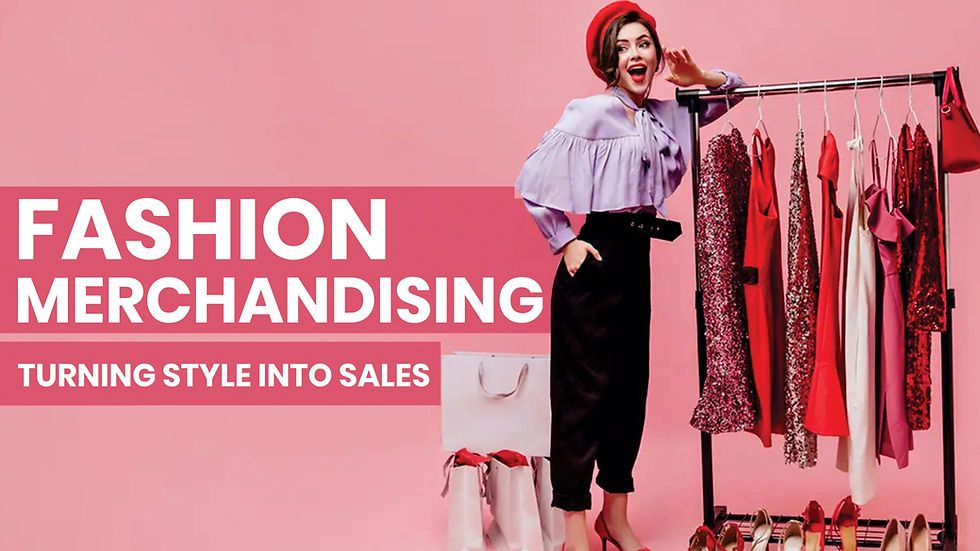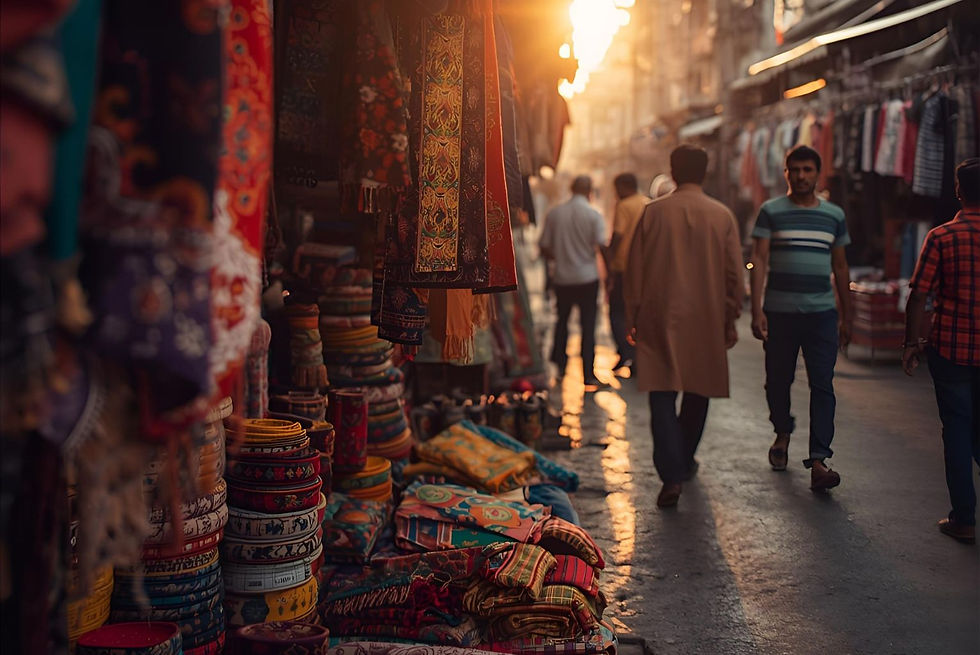Fashion Merchandising: Turning Style Into Sales
- Lovish Aggarwal
- 23 hours ago
- 3 min read

Fashion merchandising is the link between creativity and commerce. Designers create beautiful clothes, but merchandising ensures these designs reach customers and generate profit. Simply put, it turns style into sales. Without effective merchandising, even the most eye-catching clothes may stay on shelves. Fashion merchandising combines art, strategy, and business sense to make fashion profitable.
At its core, fashion merchandising is about understanding what customers want and presenting it in the most appealing way. It goes beyond displaying clothes in a store. Merchandisers analyze trends, study buying patterns, plan collections, and guide pricing. This makes it possible for fashion brands to remain competitive and profitable.
The Key Steps in Fashion Merchandising
Product Planning: This involves selecting the right styles, colors, and sizes to meet market demand. Merchandisers forecast trends and decide which pieces will sell best in upcoming seasons.
Visual Merchandising: Effective displays attract customers. Using mannequins, lighting, props, and store layouts, merchandisers create an experience that draws attention and encourages buying.
Pricing Strategy: Setting prices is crucial. Prices must appeal to customers while ensuring the brand earns a profit. Merchandisers often analyze competitor pricing and adjust their strategies.
Inventory Management: Keeping the right stock is essential. Too much inventory ties up money, and too little can frustrate buyers. Smart inventory planning prevents waste and improves sales.
Fashion merchandising also involves planning promotions and marketing campaigns. Merchandisers collaborate with designers, marketers, and retailers to showcase new collections effectively. Seasonal sales, online campaigns, and in-store events all play a role in turning style into sales.
Why Fashion Merchandising Matters
Boosts Sales: Presenting products strategically encourages more purchases. A well-merchandised store can make basic items look desirable.
Reduces Waste: Smart planning avoids overproduction and unsold stock. This saves money and supports sustainable practices.
Strengthens Brand Identity: Consistent displays, pricing, and campaigns create a clear brand image, helping customers connect with the brand.
Keeps Up With Trends: Merchandisers track what is popular and predict future trends, ensuring products remain relevant.
Skills Needed in Fashion Merchandising
A successful fashion merchandiser blends creativity and analytical thinking. Key skills include:
Fashion Sense: Understanding what styles and designs appeal to customers.
Analytical Skills: Tracking sales, predicting trends, and managing inventory effectively.
Communication Skills: Coordinating with designers, suppliers, and retail staff.
Marketing Knowledge: Planning promotions, campaigns, and visual displays that attract buyers.
Merchandisers also need adaptability. Fashion trends change quickly. What sells one season may fail the next. They must respond to market shifts, customer feedback, and competitor actions promptly.
The Role of Technology in Fashion Merchandising
Modern fashion merchandising relies heavily on technology. Tools like inventory management software, customer analytics, and trend forecasting apps help merchandisers make data-driven decisions. Online platforms also provide insights into customer preferences, allowing brands to adjust their collections and marketing in real time.
Examples of Fashion Merchandising in Action
A store may arrange a new summer collection near the entrance with mannequins dressed in coordinated outfits. This visual strategy encourages customers to buy multiple items.
Online retailers use curated collections and “frequently bought together” suggestions to increase sales. This is digital merchandising that turns clicks into purchases.
Seasonal promotions, like Black Friday sales or holiday campaigns, are carefully planned to maximize revenue while keeping the brand stylish and appealing.
Career Opportunities in Fashion Merchandising
Fashion merchandising opens many career paths. Some roles include:
Retail Merchandiser: Plans in-store displays and inventory.
Visual Merchandiser: Focuses on creating attractive store layouts and window displays.
Product Planner: Predicts trends and decides which products to produce.
E-commerce Merchandiser: Optimizes online product presentation and promotions.
These roles are essential for any fashion business, from small boutiques to global brands. Merchandisers ensure that style reaches the right audience and generates revenue effectively.
Conclusion
Fashion merchandising is the heartbeat of the fashion business. It ensures that designers’ creativity is not just admired but also sold. By combining strategy, aesthetics, and customer understanding, merchandisers turn style into sales. From visual displays to pricing, inventory management, and marketing campaigns, every step is designed to attract, engage, and convert customers. Whether you dream of working in a boutique, a large fashion brand, or online retail, mastering merchandising skills can set you apart. It is a career where creativity meets business, and every decision directly impacts success. In the fast-paced world of fashion, merchandising is the secret ingredient that transforms beautiful ideas into profitable outcomes.



Comments